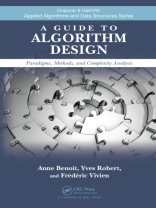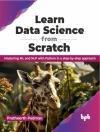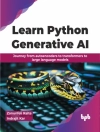Presenting a complementary perspective to standard books on algorithms, A Guide to Algorithm Design: Paradigms, Methods, and Complexity Analysis provides a roadmap for readers to determine the difficulty of an algorithmic problem by finding an optimal solution or proving complexity results. It gives a practical treatment of algorithmic complexity and guides readers in solving algorithmic problems.
Divided into three parts, the book offers a comprehensive set of problems with solutions as well as in-depth case studies that demonstrate how to assess the complexity of a new problem.
- Part I helps readers understand the main design principles and design efficient algorithms.
- Part II covers polynomial reductions from NP-complete problems and approaches that go beyond NP-completeness.
- Part III supplies readers with tools and techniques to evaluate problem complexity, including how to determine which instances are polynomial and which are NP-hard.
Drawing on the authors’ classroom-tested material, this text takes readers step by step through the concepts and methods for analyzing algorithmic complexity. Through many problems and detailed examples, readers can investigate polynomial-time algorithms and NP-completeness and beyond.












